Great Blue Heron Sighting At Lynde Shores Conservation Area
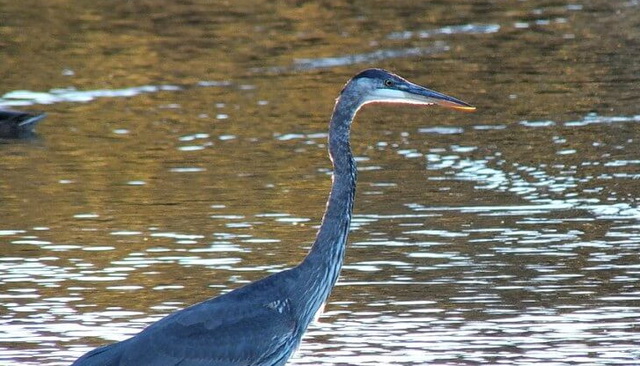
Bob and I seem to have a fascination with Great Blue Herons. These stately birds always demand our attention as this one did on an outing to Lynde Shores Conservation Area in Whitby, Ontario.
We routinely go birdwatching, and what is supposed to be a one-hour stroll usually turns into a 3-4 hour sojourn along some marsh, in a forest or crossing a meadow. Birdwatching requires as much patience and focus as this Great Blue Heron is exercising in its attempt to catch a fish.
It was as Bob and I prepared to return to our car that we spotted the boardwalk jutting out into Lynde Creek Marsh. Even after visiting the conservation area many times, we had never explored that section of the trail, so we thought it was about high time. What a pleasure it was to see standing, on the opposite shore from a lookout point, this solitary Great Blue Heron.
Only moments earlier, as Bob and I made our way along the trail bordering the creek, we had noticed the lookout in the distance, nestled in amongst the bulrushes. Lynde Creek was aflutter with ducks, geese, and many other waterfowl that afternoon.
The Great Blue Heron cautiously edged out from the dark shadows into the flowing water and stealthily stalked some unknown prey. The heron seemed oblivious to us even as our cameras were clicking and buzzing. It was around 5:30 p.m….time for supper to be served.
With the late afternoon sunshine cutting through the trees and illuminating the opposite bank of the creek, an excellent view of the heron was afforded to us. When the heron assumed a crouched position and hovered there, we knew that a strike was imminent.
In one sharp, lightning-fast movement, the Great Blue Heron thrust its head underwater hoping to stab the prey with its long strong bill.
We watched with anticipation to see if his hunting skills had paid off.
The heron did not come up empty-handed, so it stepped back towards the creek bank before swallowing its catch. When it turned its back to us, the heron’s blue plumage looked even bluer than usual in the golden rays of the autumn sun.
Great Blue Herons are very large birds, the largest herons in North America, in fact. They can be up to 54 inches long (head-to-tail), with a wingspan of up to 79 inches, and a height that can reach 54 inches. For all that stature, though, they weigh a mere 4.6-7.9 pounds.
Shortly thereafter, the Great Blue Heron was again poised to stalk fish or other prey in the shallow water at the edge of the creek. Herons practice the routine of standing stock still for long periods of time and waiting for prey to come within striking distance of their blade-like bills and long necks.
Perhaps this juvenile’s earlier actions along the creek bank had scared away other potential prey for it decided to wade slowly into deeper water. This juvenile is identifiable because of the black and white striped throat and neck, in combination with its dark crown. An adult Great Blue Heron has a black and white striped crown. As the heron assumed yet another statuesque pose, Bob and I were forced to leave for home. It was time for our own dinner.

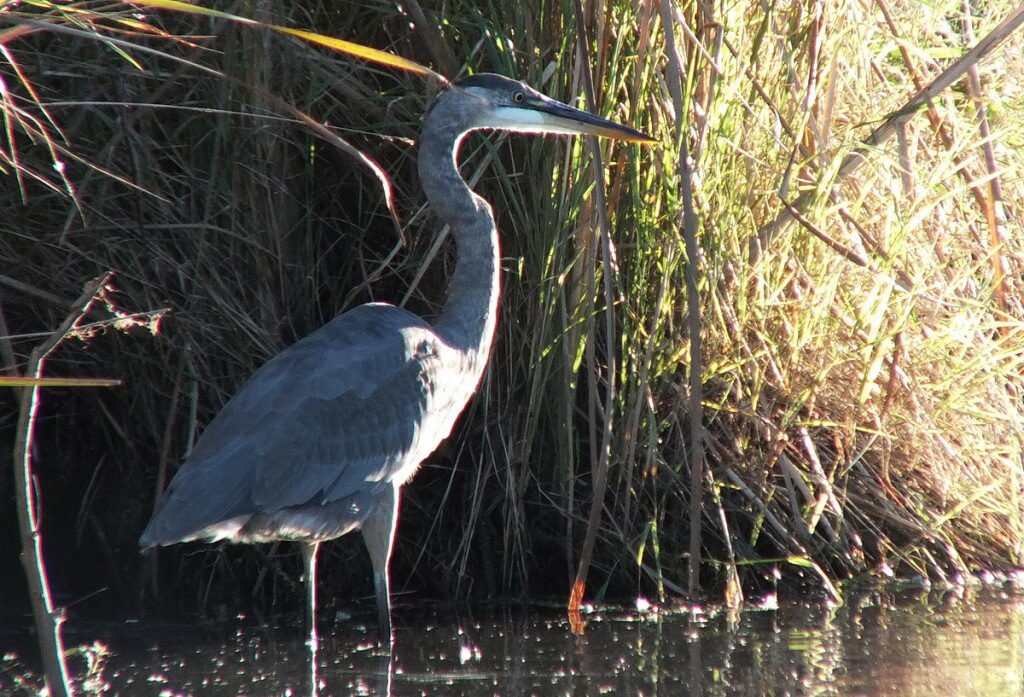
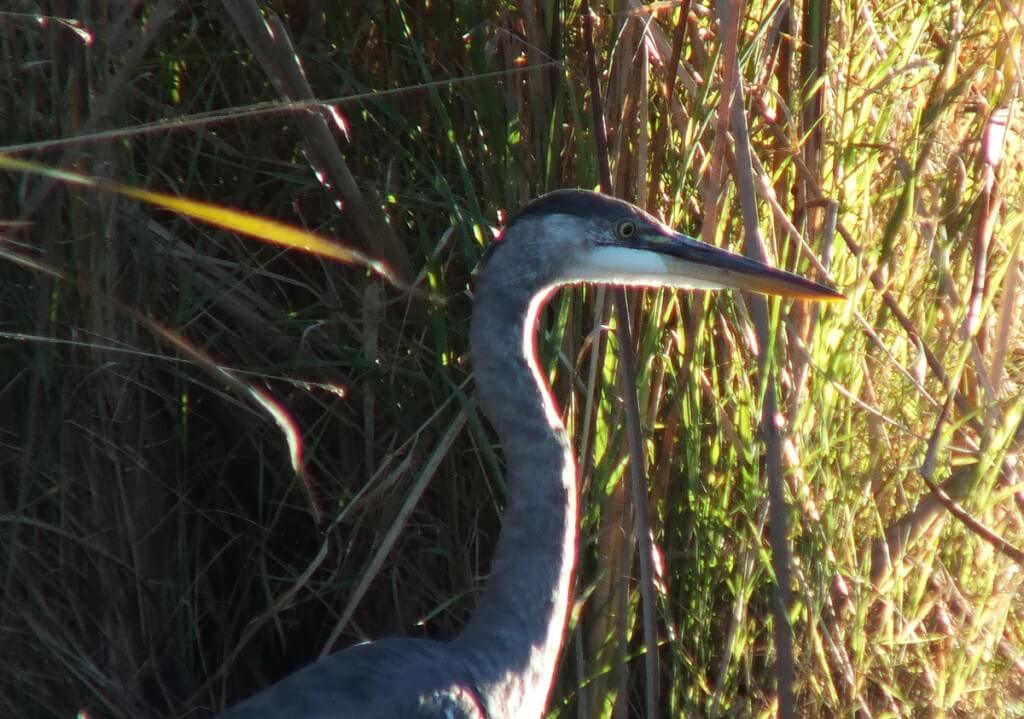
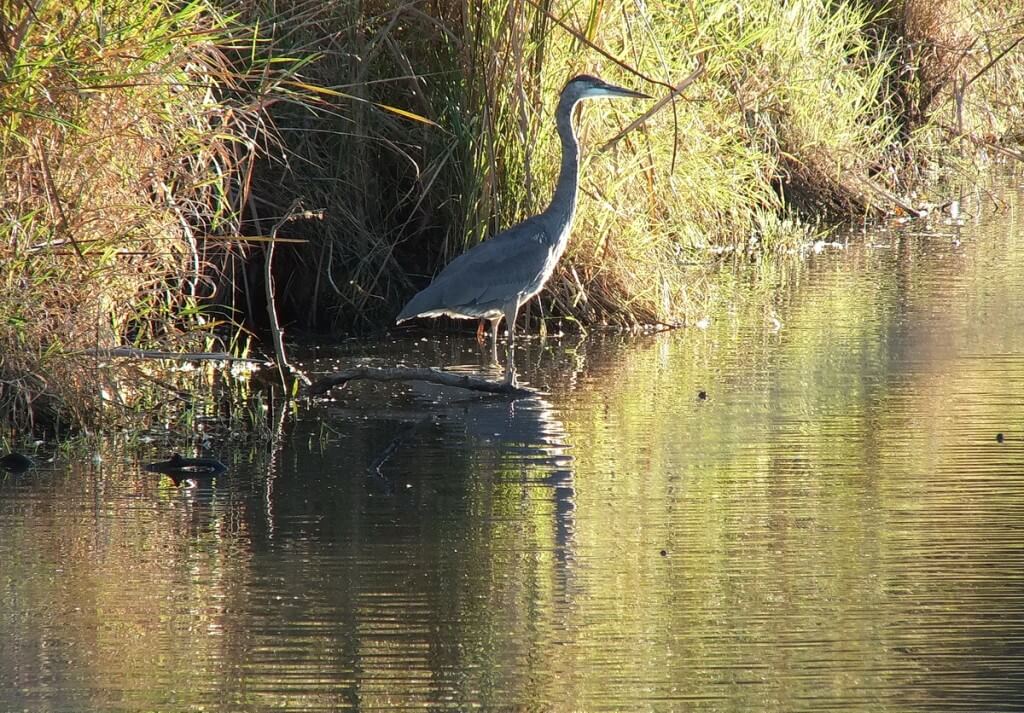
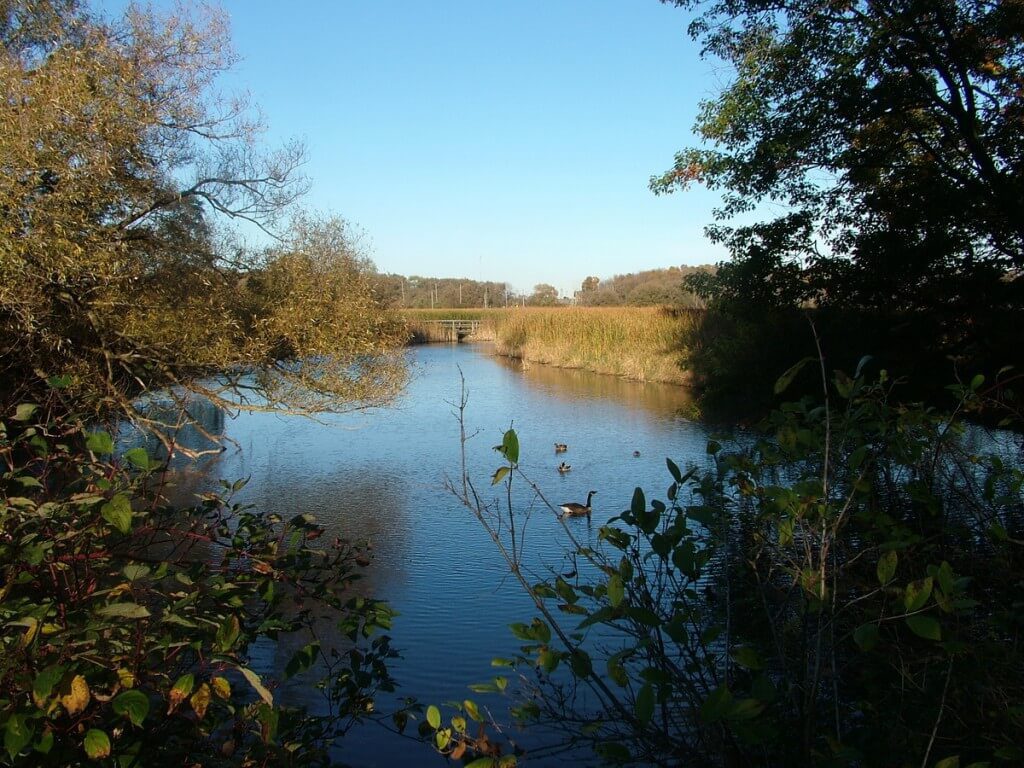
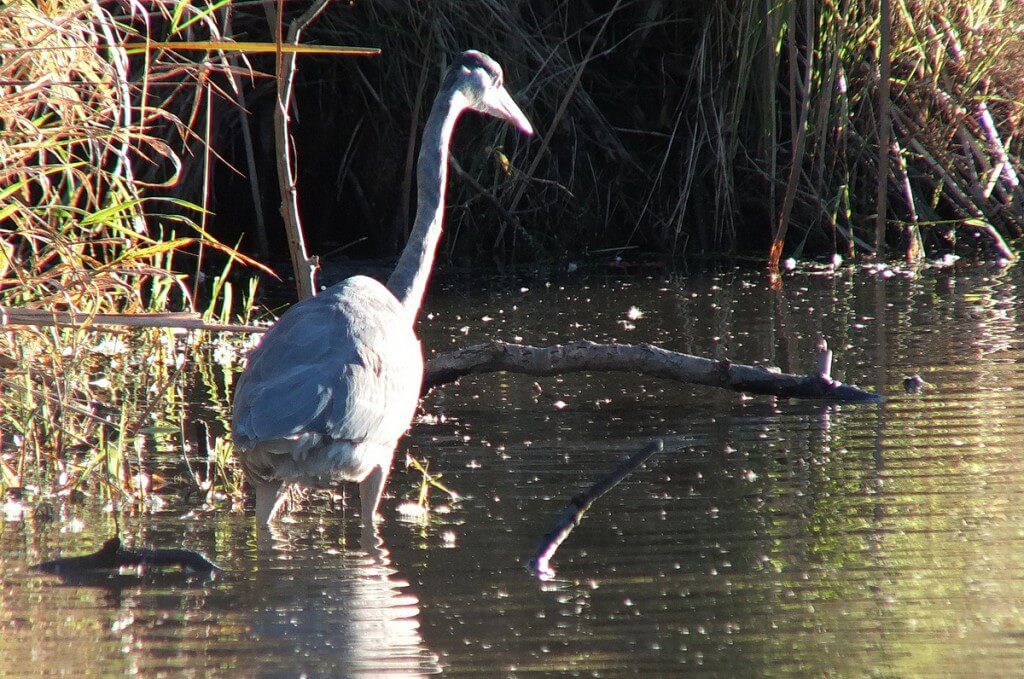

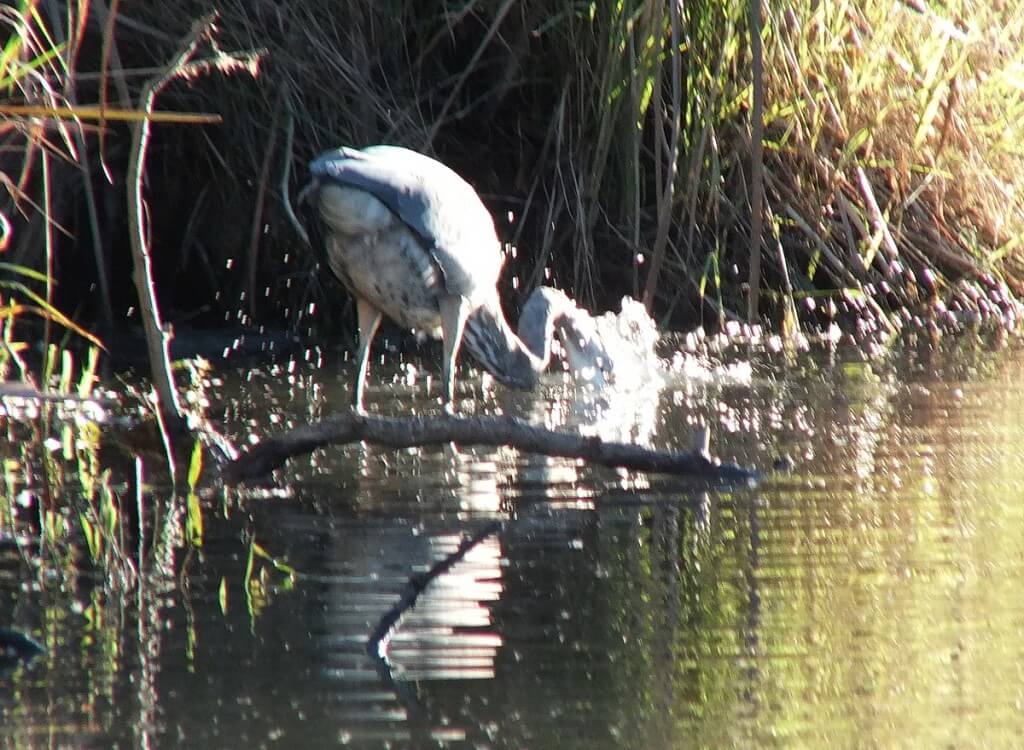
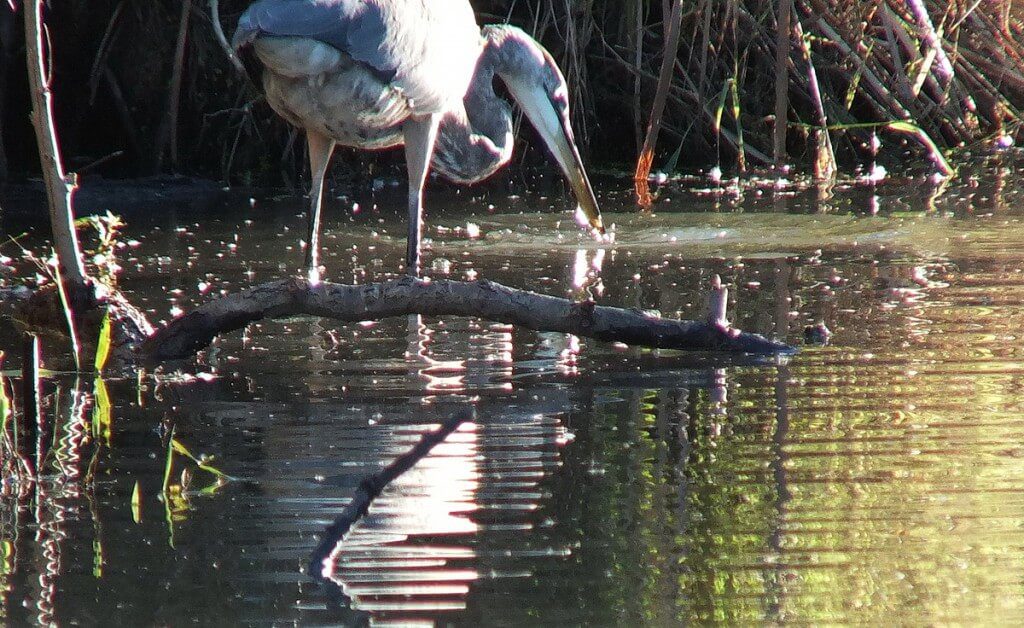
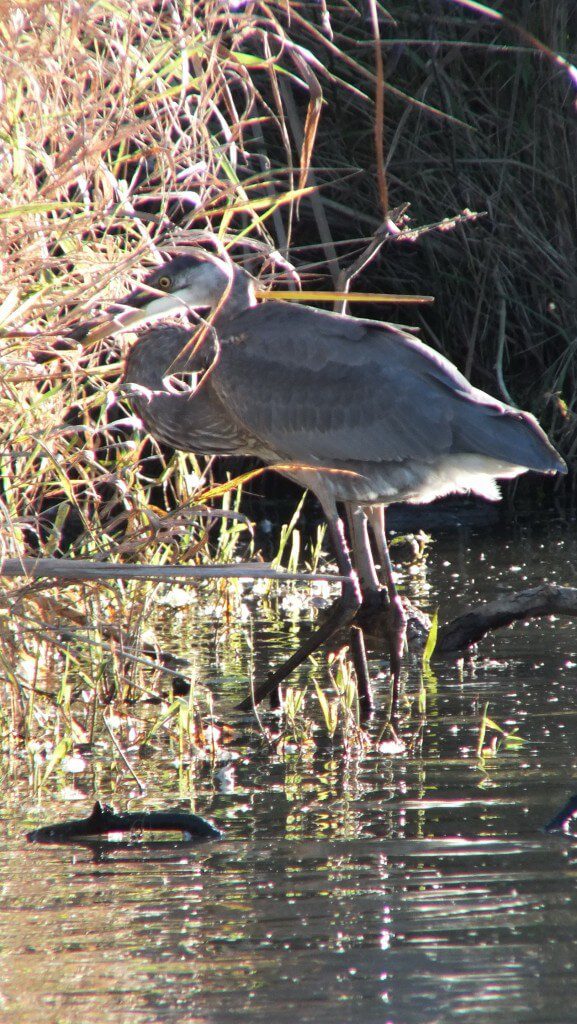
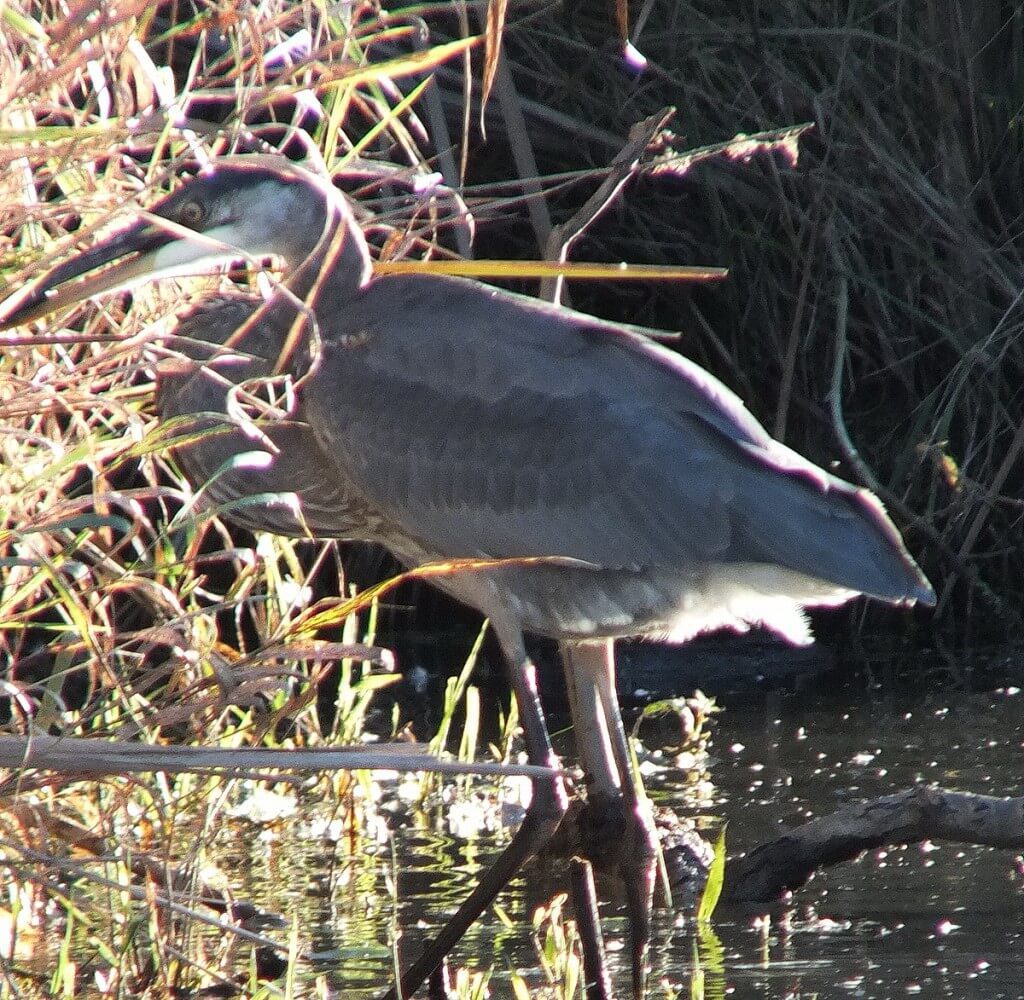
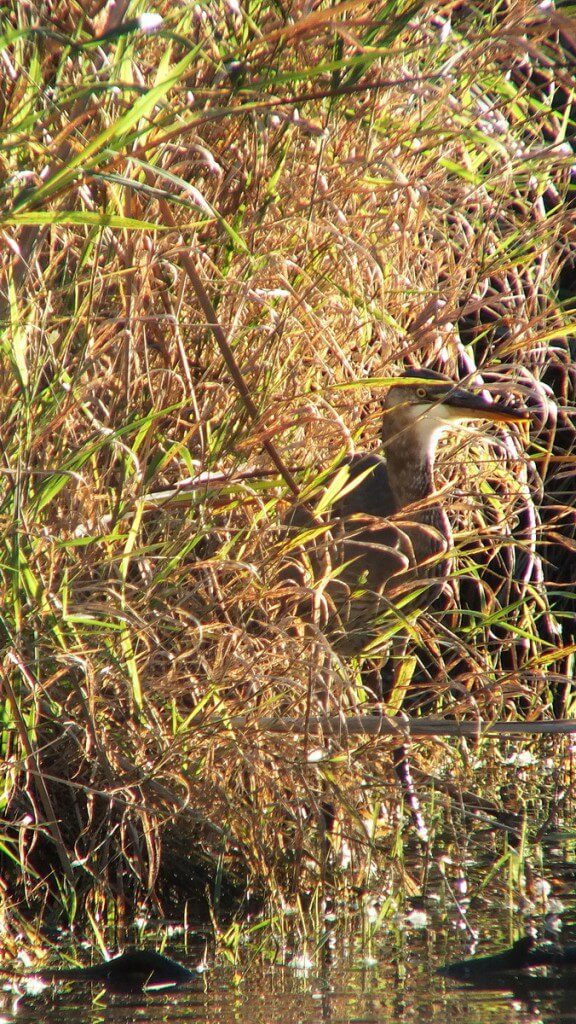
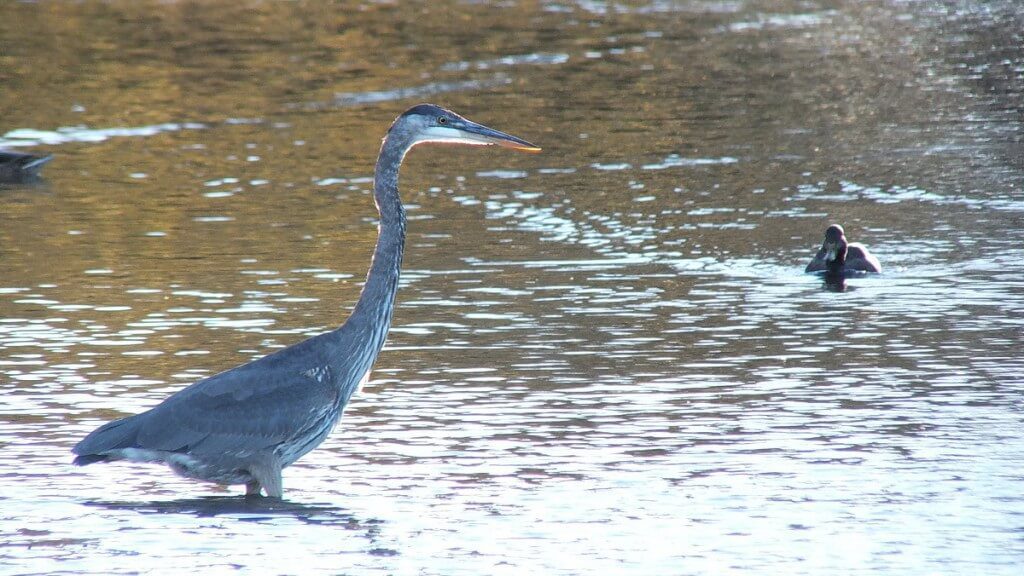
From Facebook:
Claire Hilscher wrote:
“Several great blue herons tried to create a colony this past spring in our big maple tree, just outside our living room windows. We decided to discourage them… We do have herons fishing in our creek-estuary every day though…and that is pretty cool.”
https://www.facebook.com/claire.hilscher